Studies on Thermal Design of Electronic Equipment
1. Heat transfer measurement from a heated block
In order to obtain basic data for an air-cooled heating element in a compact electronic device, we measured local heat transfer from a low-profile block placed in a narrow rectangular duct using infrared thermography. The data obtained were developed to formulate a general correlation of Nusselt number. In addition, we tried to enhance the heat transfer from the block by placing a barrier upstream of the block. The results demonstrate that the heat transfer is dramatically enhanced if the position and shape of the barrier are optimized.
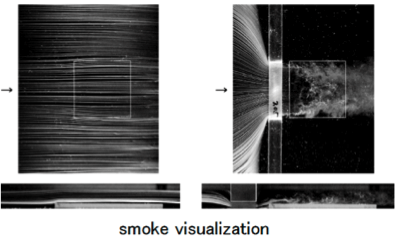
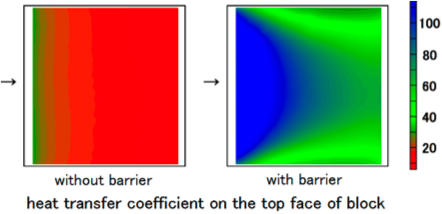
[main literature]
- Forced Convection Heat Transfer from a Low-Profile Block Simulating a Package of Electronic Equipment, ASME J. Heat Transfer, 126-3 (2004) 463-470
- Heat Transfer Enhancement of a Low-Profile Block in a Channel Flow at Low Air-Velocity, Trans. Jpn. Soc. Mech. Eng., Ser. B, 71-702 (2005), 581-589
2. Measurement of cooling fan performance
We have fabricated a device for measuring the fan performance curve (PQ curve) for a very small fan. Using this device, we investigated the variation of the PQ curve, which was affected by placing an obstacle in the vicinity of the fan. Also, we measured the variation of the flow field at the discharge side, which was affected by the pressure load of the fan.
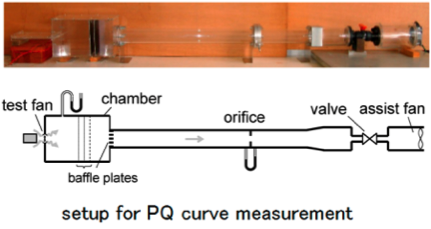
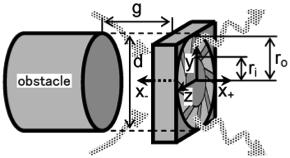
[main literature]
3. Modeling of cooling fan for CFD simulation
In order to hasten the thermal design for forced convection electronic devices, cooling fans should be modeled in order to reduce computational load. The fan-curve model, which utilizes the PQ curve to generate volumetric flow rate versus the pressure load, is very simple and is usually incorporated into commercial CFD codes. In this work, we proposed an improved fan-curve model that predicts a realistic flow field at the discharge side, in addition to accurately predicting the flow rate. The proposed model was validated to reproduce the flow rate and velocity distribution satisfactorily compared with the experimental data.
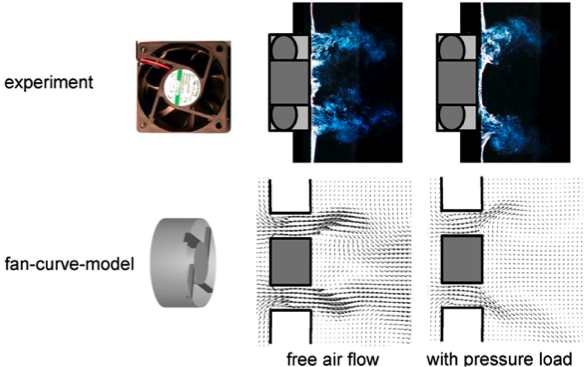
[main literature]
[related document]
- Interview about fan model (Software CRADLE)